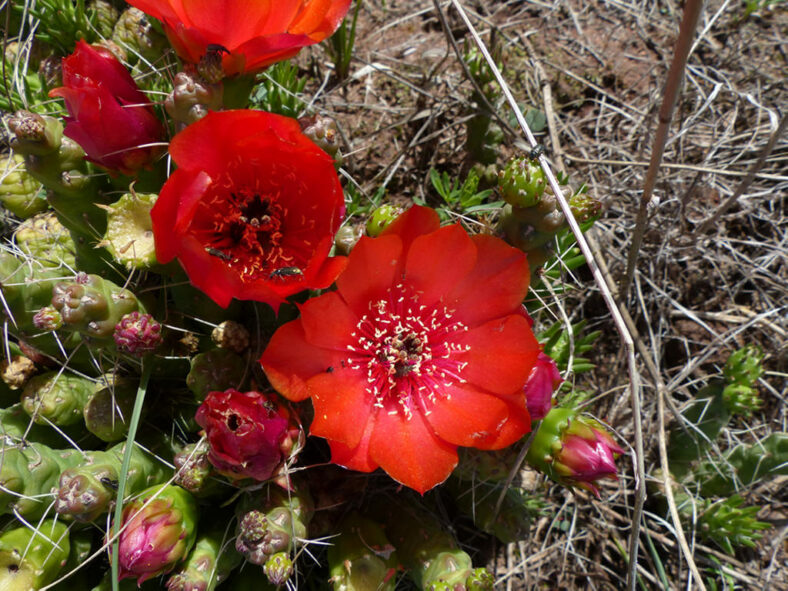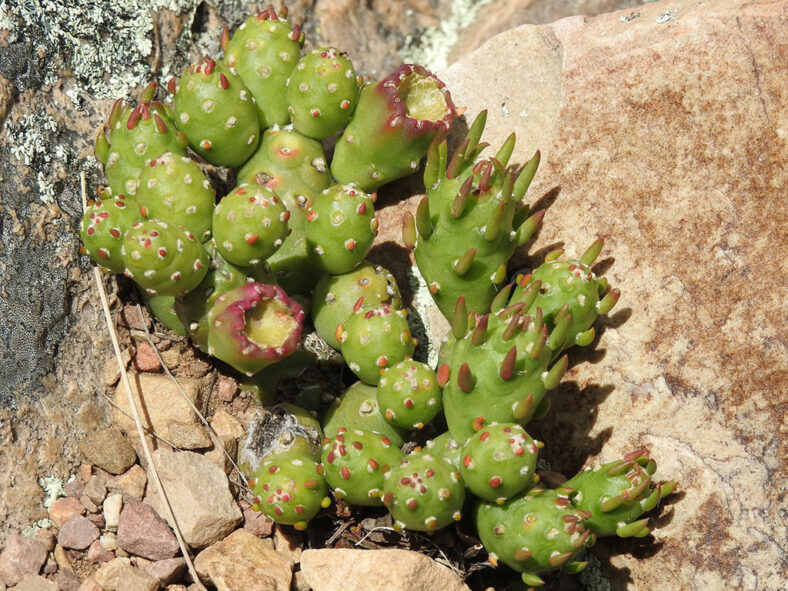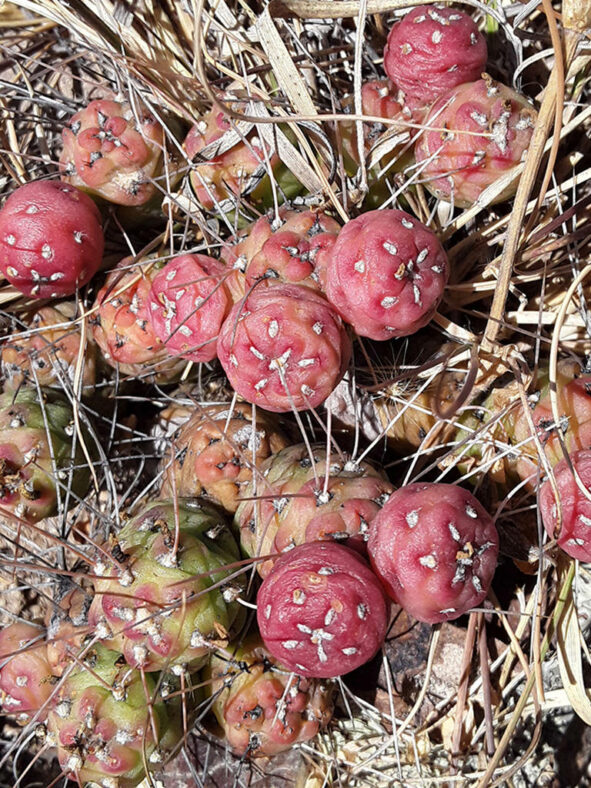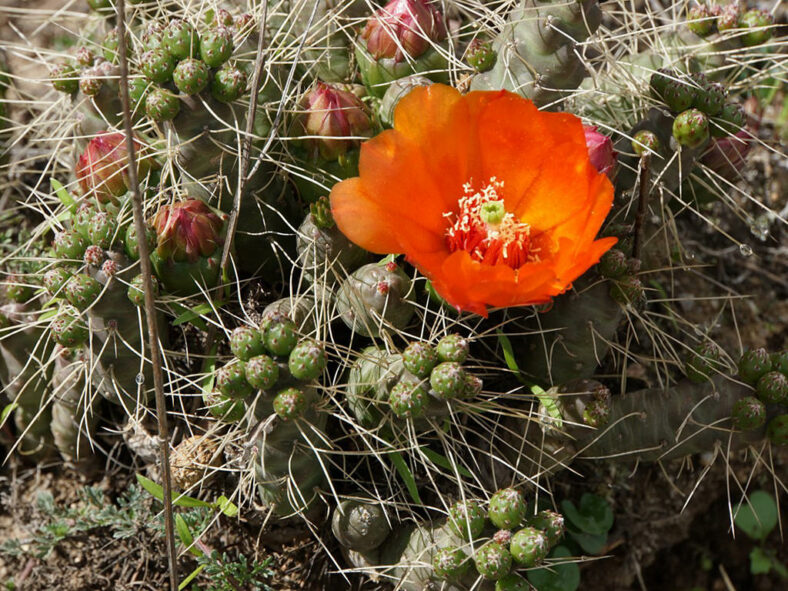Tephrocactus verschaffeltii was first described in 1898 as Opuntia verschaffeltii.
Scientific Name
Tephrocactus verschaffeltii (Cels ex F.A.C.Weber) D.R.Hunt & Ritz
Synonym(s)
Austrocylindropuntia verschaffeltii, Banfiopuntia verschaffeltii, Cylindropuntia verschaffeltii, Opuntia verschaffeltii
Scientific Classification
Family: Cactaceae
Subfamily: Opuntioideae
Tribe: Tephrocacteae
Genus: Tephrocactus
Etymology
The specific epithet "verschaffeltii" (pronounced ver-shaf-FELT-ee-eye) honors Ambroise Colette Alexandre Verschaffelt (1825-1886), a distinguished Belgian horticulturist and author.
Origin
Tephrocactus verschaffeltii is native to the high-altitude grasslands of Bolivia and northwestern Argentina (Jujuy, Salta, Tucumán, and Catamarca), where it grows in barren, rocky soils.
Description
Tephrocactus verschaffeltii, formerly known as Austrocylindropuntia verschaffeltii, is a shrubby cactus with ellipsoidal to cylindrical, slightly tuberculate stem segments that can be either spinless or with up to 7 spines per areole.
In the plants' native habitat, the stem segments can grow from 0.4 to 4 inches (1 to 10 cm) long and 1 inch (2.5 cm), often heavily branching toward their tips, producing numerous spherical side shoots. However, they can reach up to 12 inches (30 cm) in cultivation. The stem segments are green, slightly glaucous, and can take on attractive red and brown hues when exposed to full sun. The yellowish spines can be straight or curved and vary from bristle-like to needle-like, measuring from 0.4 to 2.4 inches (1 to 6 cm) long. Sometimes, the spines are absent, and the yellow-felted areoles bear only a few white glochids. The awl-like rudimentary leaves are green with red tips and can grow up to 1.2 inches (3 cm) long.
The flowers are orange-red to deep red, measure about 1.6 inches (4 cm) long and 1.4 inches (3.5 cm) in diameter, and appear at the tips of the higher-up stem segments in summer. The pericarpel is green and shaped like a reversed cone, with a few areoles. The spinless fruits are ellipsoidal to pear-shaped and contain numerous brown seeds.

How to Grow and Care for Tephrocactus verschaffeltii
Light: Tephrocactus verschaffeltii thrives in full sun, but some shade during midday and afternoon can prevent sunburn during summer. A window that receives sunlight 6 hours a day works best when grown indoors.
Soil: This cactus requires a soil mix that drains well. So, use a commercial cactus potting mix or create your own.
Temperature: Extremely tolerant of high temperatures, Tephrocactus verschaffeltii prefers cooler temperatures in winter. It grows best in USDA Plant Hardiness Zones 9a to 11b, with average minimum winter temperatures ranging from 20 to 50 °F (-6.7 to 10 °C).
Watering: From spring to fall, water moderately and let the soil dry out completely before watering again. In most areas, rainfall will be enough for established plants. If potted, never let the container sit in water. During the winter, suspend the watering.
Fertilizing: Tephrocactus verschaffeltii does not need fertilizer when planted in the ground. However, when grown in a container, the plant will benefit from water-soluble fertilizer during the growing season. Suspend the feeding during the winter when it goes dormant.
Repotting: Repot only when the cactus becomes potbound or is too large and unstable in its container. Choose a slightly larger container with drainage holes at the bottom. The best time for repotting is late winter or early spring.
Propagation: You can propagate Tephrocactus verschaffeltii by stem segments or seeds. Using stem segments is the easiest method and yields faster results. For best results, take stem segments in early summer. Sow the seeds in late spring.
Learn more at How to Grow and Care for Opuntia.
Toxicity of Tephrocactus verschaffeltii
Tephrocactus verschaffeltii is not toxic to humans or pets. However, keep the plant away from pets and children as it has harmful spines and glochids that may cause skin irritation.
Links
- Back to genus Tephrocactus
- Succupedia: Browse succulents by Scientific Name, Common Name, Genus, Family, USDA Hardiness Zone, Origin, or cacti by Genus
Photo Gallery
Click on a photo to see a larger version.


